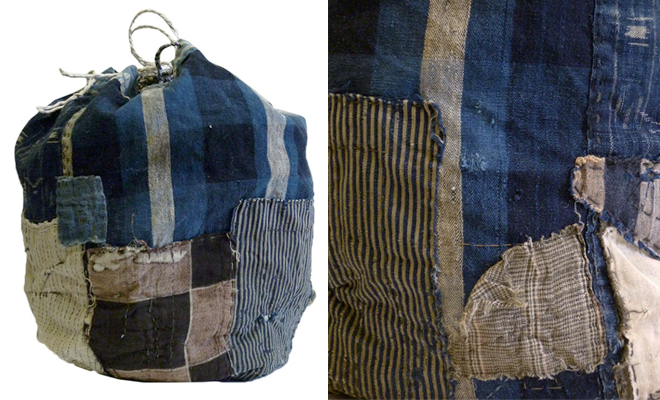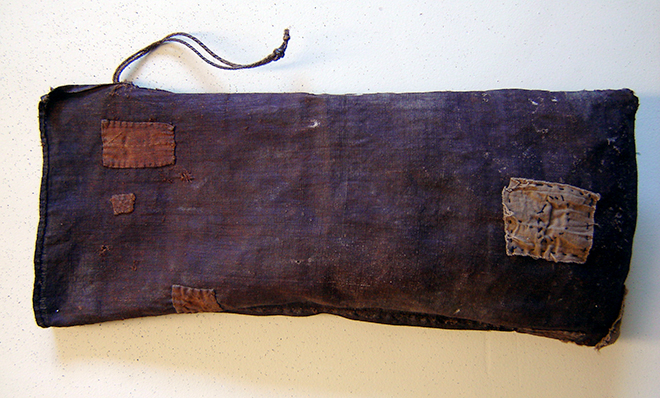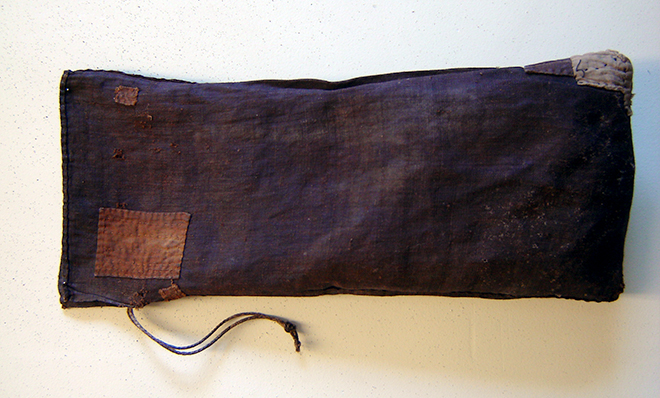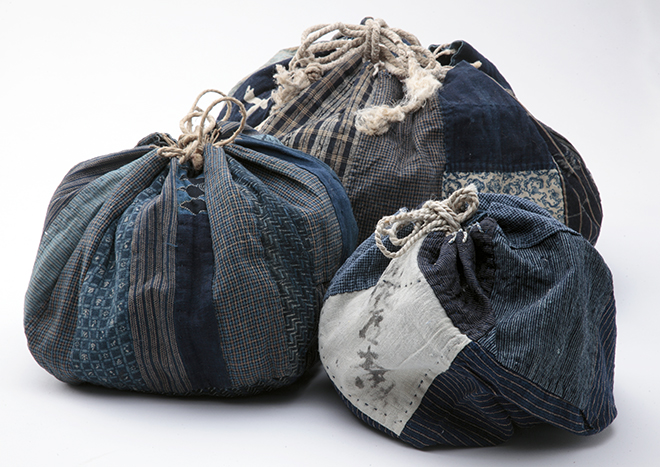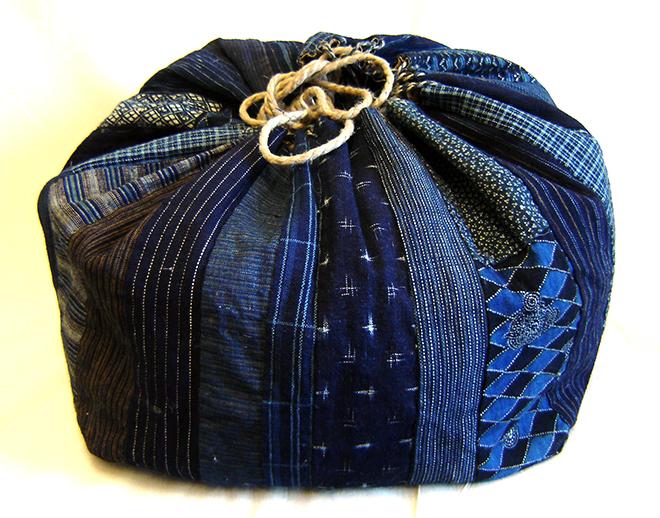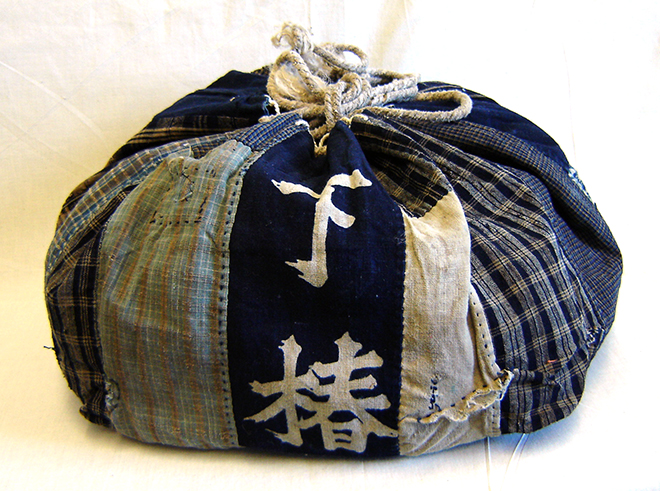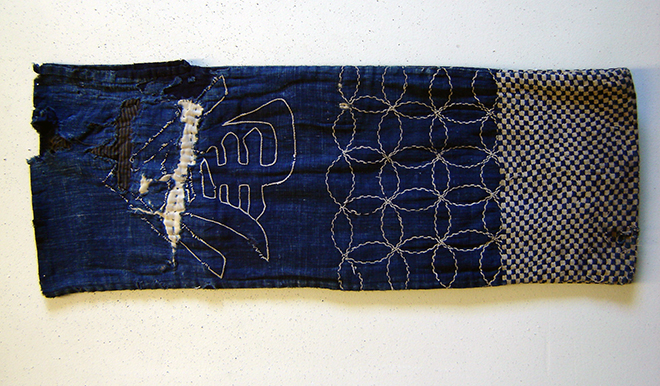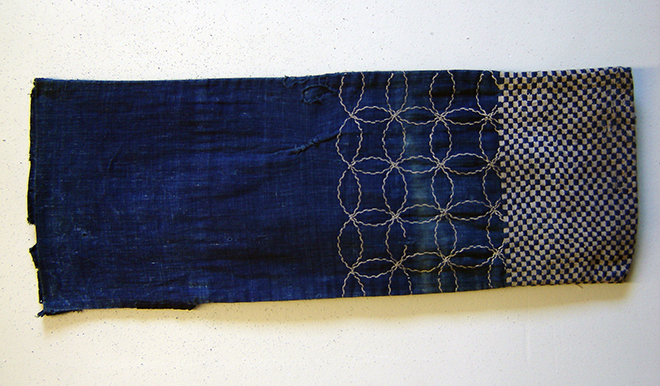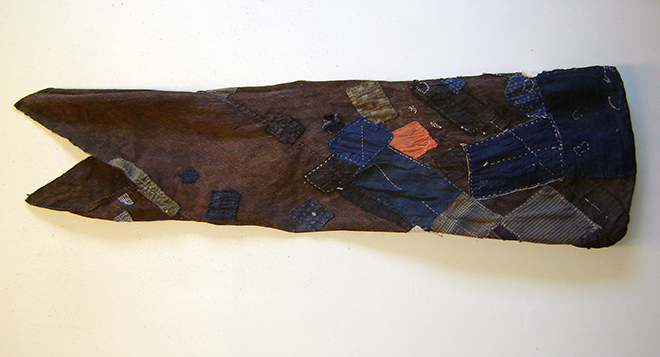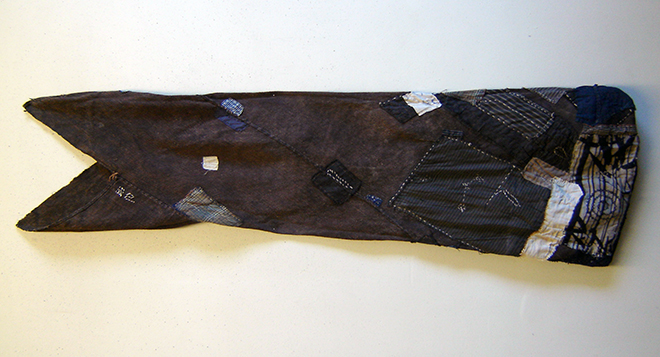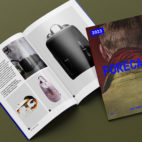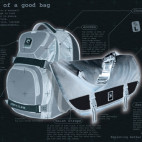Carry History :: Antique Japanese Bags
We love old bags, especially really old (antique) handmade bags from Japan. Though many of these carry examples were for made for everyday common folk to use, there is an unmatched beauty to them, due to their simplicity, wear, and careful repairs. We don’t see this anywhere in the world today…these are most very distinctly Japanese from another time. Though we’d love to call ourselves experts on these 19th century beauties, we’re not. So to get a detailed breakdown, we reached out to Stephen at Sri Threads, a retailer and expert on these fine specimens. Who or what is Sri Threads?
Sri Threads is a by-appointment textile gallery specialising in antique, Japanese, indigo dyed cotton boro fabrics, the patched and mended folk textiles of old Japan. Sri’s extensive collections of Japanese utilitarian fabrics include a rich variety which are hand made of hemp, ramie and other natural fibres in the form of work clothing, farm bags, rustic netting, wrapping cloths and futon covers. Sashiko, shibori, katazome, sakiori and other textile techniques are represented. The collections are enhanced by frequent sourcing trips to Japan. Sri is located in Brooklyn, New York. Check them out on their website and on Instagram (that’s how we learned about them) at @srithreads. Their blog is also amazing, fun and educational at the same time.
Let’s take a look at some examples of these beautiful, historic, handmade and hand-repaired bits of Japanese carry…
Kaki Shibu Bag (not the actual name of the product, but a name used by Sri for internal reference use). This is a general, utilitarian carry bag which is made either of cotton or hemp and which was dipped many times in green persimmon tannin (persimmon juice) or kaki shibu, which yields the dark brown color and the leathery sheen to the cloth.
You can see that the twisted string is meant to wrap around the neck of the bag, making it like a pouch. Notice the sashiko patch repairs (folks back then would automatically repair their items without any thought of even possibly replacing it with a brand new one). It measures 27 1/2″ x 11″ and dates to the late 19th century or so.
—
Komebukuro or “Rice Bag”, is usually made from small pieces of cloth – either hemp or cotton – that have been stitched together in a playful or spirited manner.
The reason for this festive style of piecing and stitching is that this type of bag was made to bring small portions of dried rice of beans to a local shrine or temple during its festival time.
These vary in size from around 6″ x 6″ x 6″ to around 10″ x 10″ x 10″ and they date to the late nineteenth, early 20th century. (Editor’s note: I’d kill to own one of these bags!)
Sashiko Stitched Bag (again, not the actual name of the product, but a name used by Sri for internal reference use). This bag is constructed exactly like the “kaki shibu bag”, above. It is constructed of home spun and hand woven indigo dyed cotton, it’s lined with the same. This bag, a utilitarian, all-purpose bag, was most likely made as a part of a couple’s wedding trousseau.
It is heavily stitched with white sashiko stitched designs and as can be seen, it is “boro” or tattered and mended from a great deal of use over time. It dates from the late 19th to the early 20th century and measures 31 1/4″ x 11 1/4″.
Tsunubukoro or “Horn Bag”. This type of storage/carry bag is called a tsuno (horn) bukuro* (bag) because the two top bits appear to be “horns”. The reason for this is its construction: it is made from one, long piece of cloth, usually some kind of bast fibre (fibre gleaned from the inner bark of plants) that is folded and then stitched together on the bias.
This bias construction allows for a great deal of expansion when the bag is full of stuff. It could be carried over the shoulder like a duffle or it could be used for storage. This one is heavily mended and is shown inside-out. It’s probably from the first half of the 20th century and it measures 50″ x 17″.
*The Japanese word for bag is fukuro. The f changes to a b sound when it follows another word, making a compound word as in komebukuro. It’s just for ease of pronunciation.
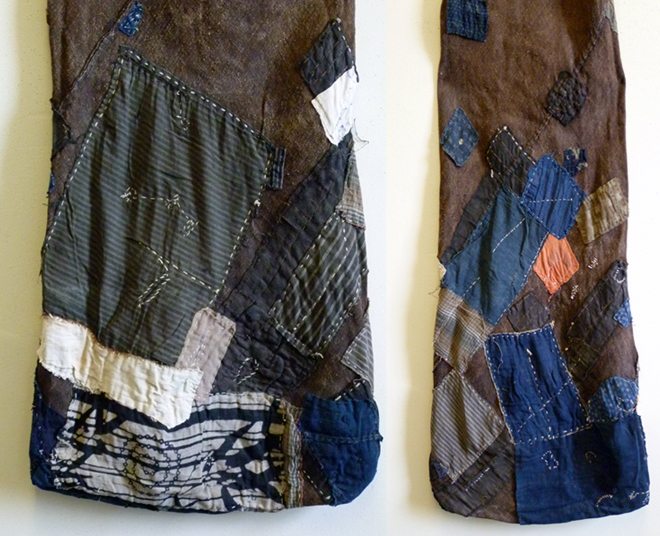 For more info and/or to find some of these carry examples for purchase for your own collection, head on over to Sri Threads (I’ll be watching for the right Komebukuro to scoop up the moment I see it).
For more info and/or to find some of these carry examples for purchase for your own collection, head on over to Sri Threads (I’ll be watching for the right Komebukuro to scoop up the moment I see it).
Thank you again, Stephen!





 Carry Awards
Carry Awards Insights
Insights Liking
Liking Projects
Projects Interviews
Interviews
